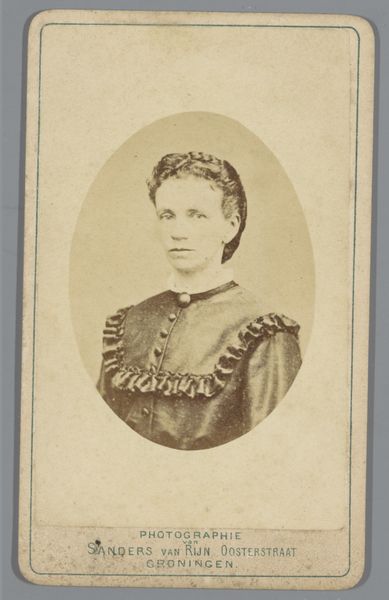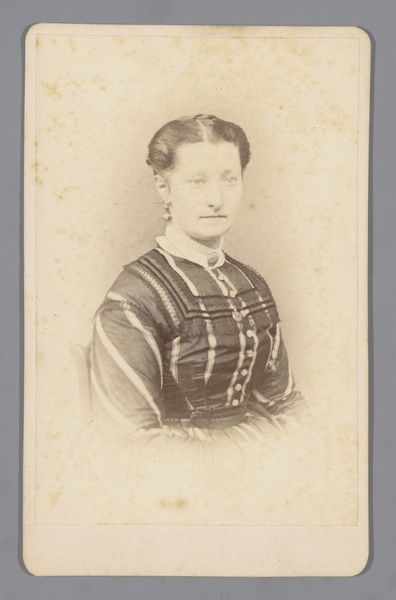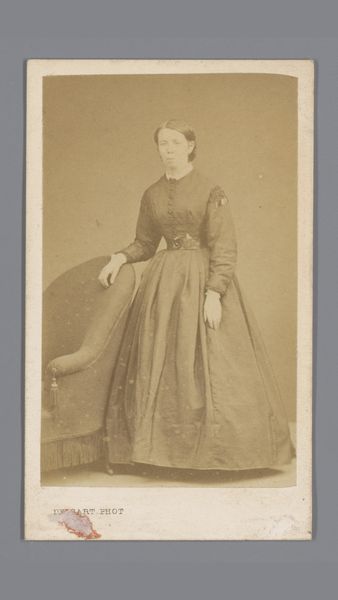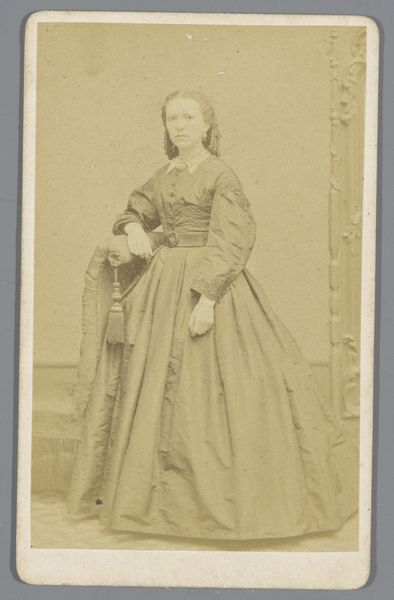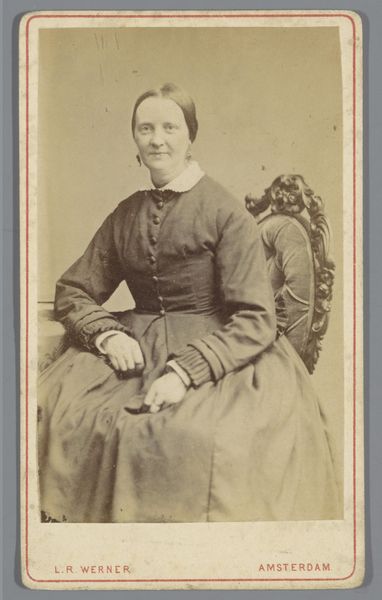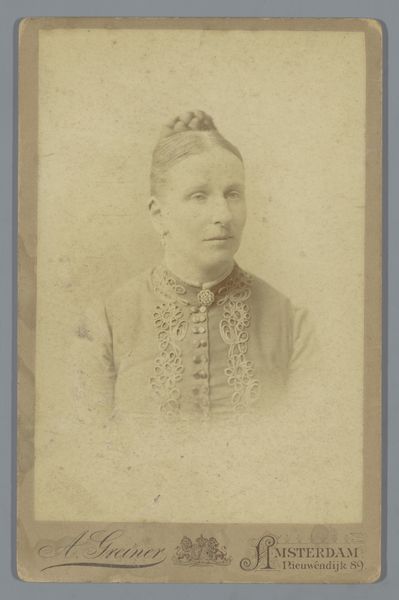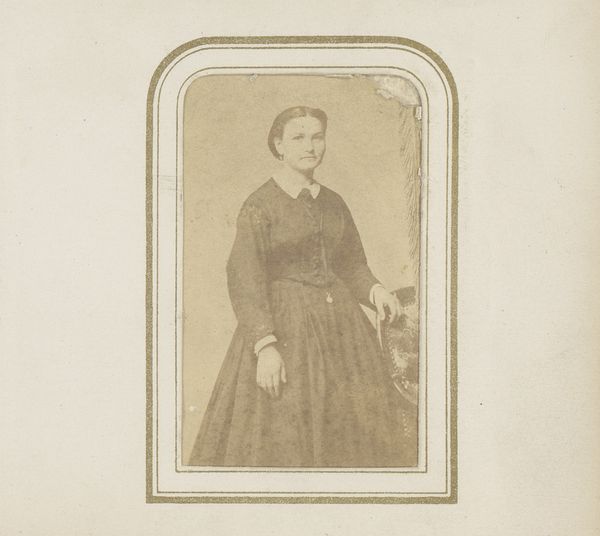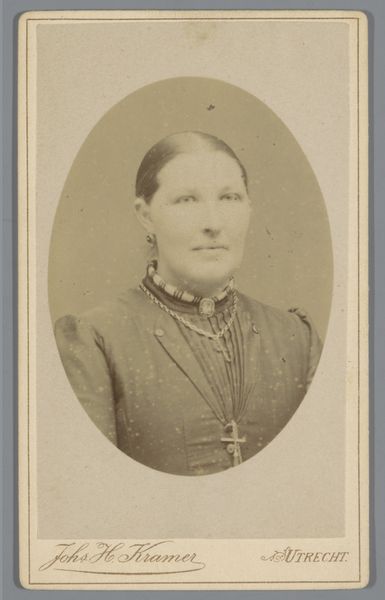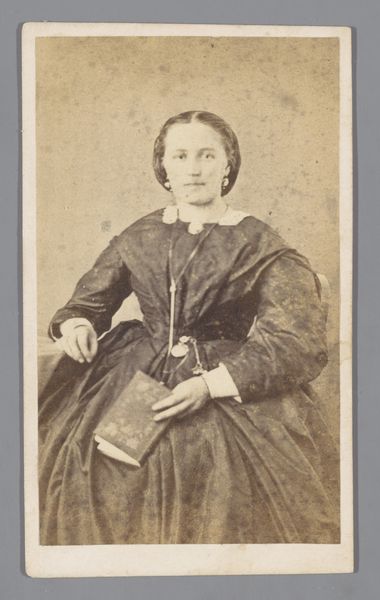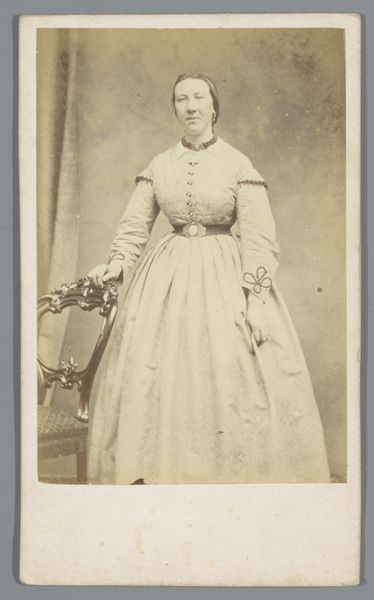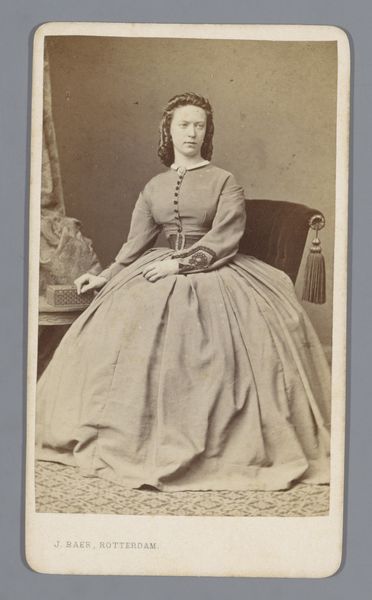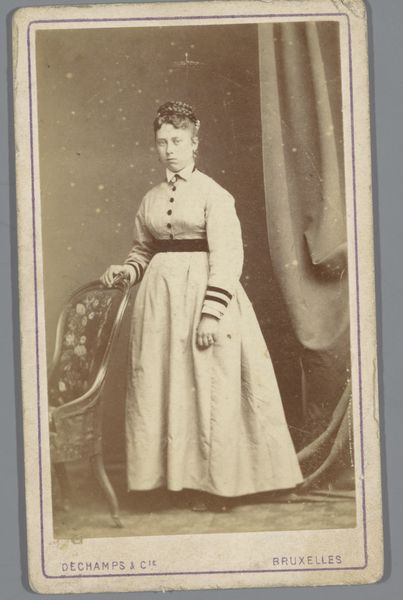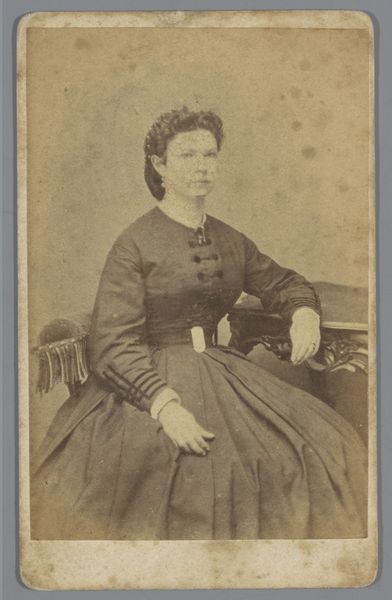
photography
#
photography
#
historical fashion
#
genre-painting
#
realism
Dimensions: height 101 mm, width 62 mm
Copyright: Rijks Museum: Open Domain
Curator: What immediately grabs me is the socio-economic aspect inherent in photography in 1870. Editor: So, here we have Jan Breebaard's "Portret van een onbekende vrouw", sometime between 1870 and 1878, a photograph, clearly. I'm struck by how… ordinary it feels. Almost like a snapshot, but carefully posed. What stands out to you in this portrait? Curator: This is more than just a photograph; it’s an index of Victorian material culture. Look closely: The photographic process itself— the chemicals, the paper, the time involved—represents a specific set of industrial and economic conditions. Do you notice the woman's dress? Editor: Yes, her dress looks quite detailed, although in these tones it’s difficult to see. Curator: Exactly! Think about the labor involved in its production. Was it factory-made or created by a seamstress? The slight imperfections, the detail around the collar, give clues about the garment industry at the time. Also consider who could afford such a photograph. It provides insight into the aspirations and class consciousness of the emerging middle class. This isn't just a picture; it's material evidence of a specific social strata and the commodities that defined it. The way she holds her hands suggests a certain economic status; does that resonate with you? Editor: That's interesting, I hadn't thought about the cost of photography and the implications. I’m learning to look beyond the subject and towards the process, the materials. Curator: Exactly, the production of images, like any commodity, exists within systems of labor, access, and capital. Editor: That's changed my perspective completely! Curator: Excellent. Considering these processes changes how we understand visual culture.
Comments
No comments
Be the first to comment and join the conversation on the ultimate creative platform.
